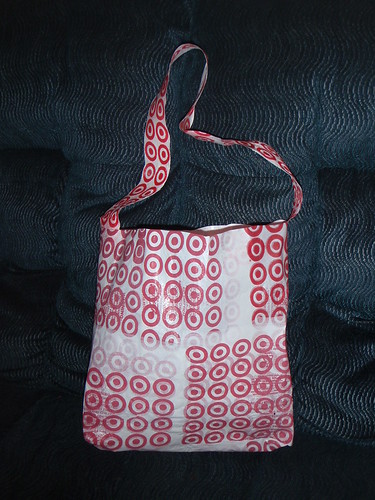For my REBAG project, I wanted to challenge myself and create a woven netted bag, such as these grocery bags.

I initially sketched a woven but box shaped bag to accommodate the requirements of the project.
In order to create cords with which to weave my bag, I collected black and green plastic bags and cut their entirety into strips, which I subsequently tied together in pairs of the same length and used a cordless drill to tightly twist together, which resulted in a durable plastic cord. There was no waste of any pieces of the plastic bags, as they went entirely into the strips with the dual-strip per cord method I used. Therefore, in theory the use of cords would be extremely sustainable as there is no waste involved in their production whatsoever.
After spending several hours making all of the cord I thought I would need at the lengths based on the measurement on the sketches, I began to tie my bag together to create a woven effect. I started with a framework of the bottom of the bag at the measurements I would need, duct taped that to the table and worked upward from there, tying together cords like a spider’s web. The structure of the bag was intact while suspended. However, as soon as the bag was finished and removed the tape, its form devolved into an unusable and tangled net, much to my chagrin.
In the future, I would stick to making my bag using a fusion method and creating a simple tote for future use, which I think will be much more time-efficient and usable.

Not only is a bag like this much more aesthetically sound, its structure is much more stable and its uses more wide-ranging as there are no holes like in a would-be netted bag.


